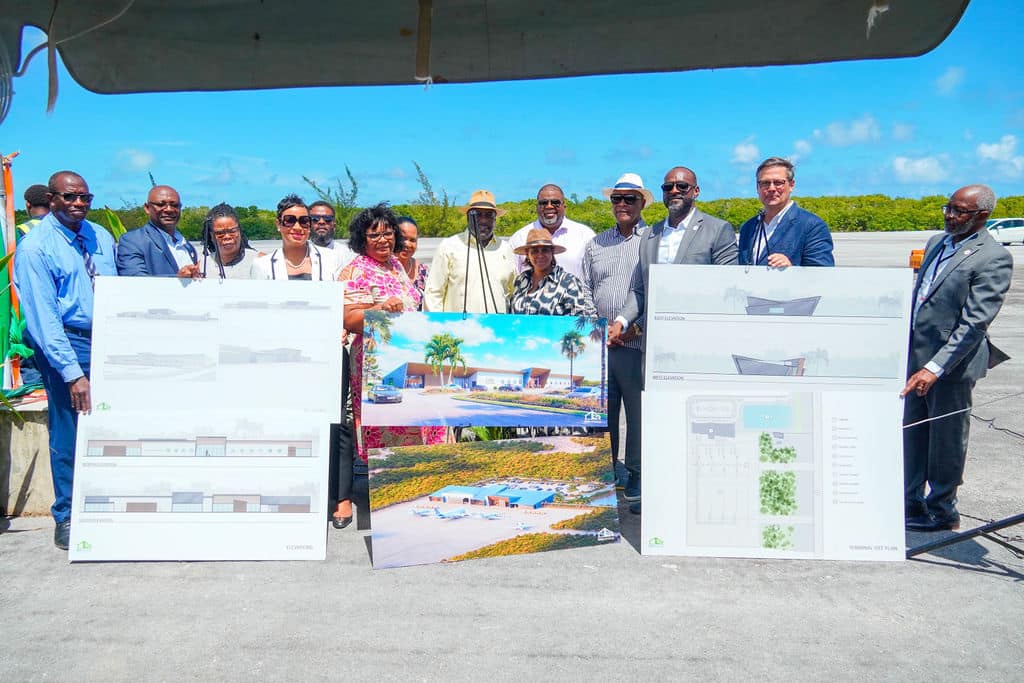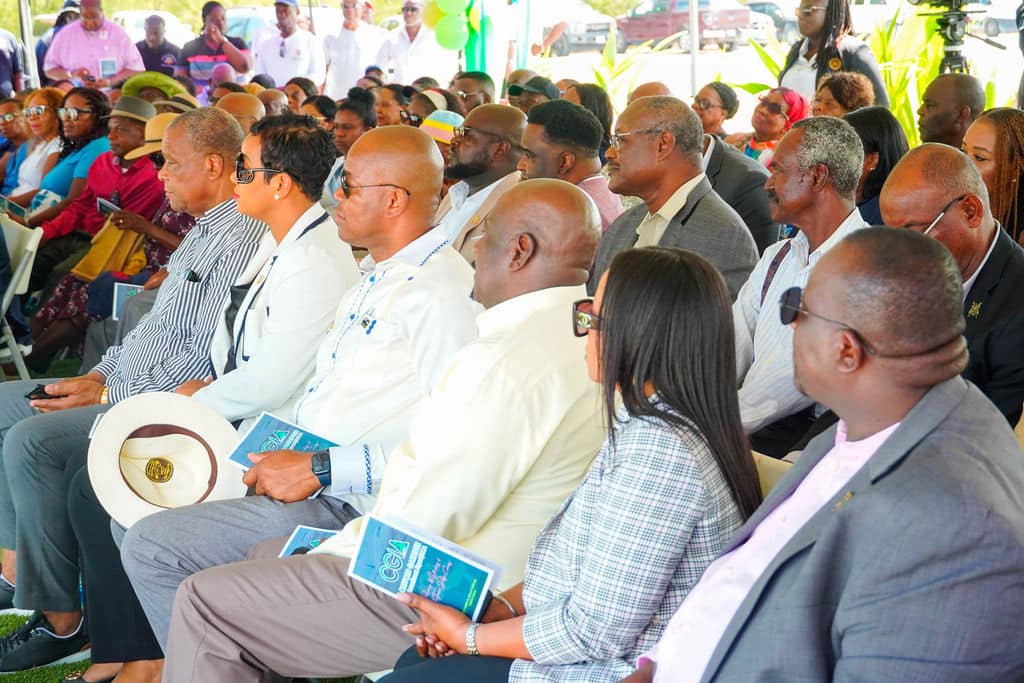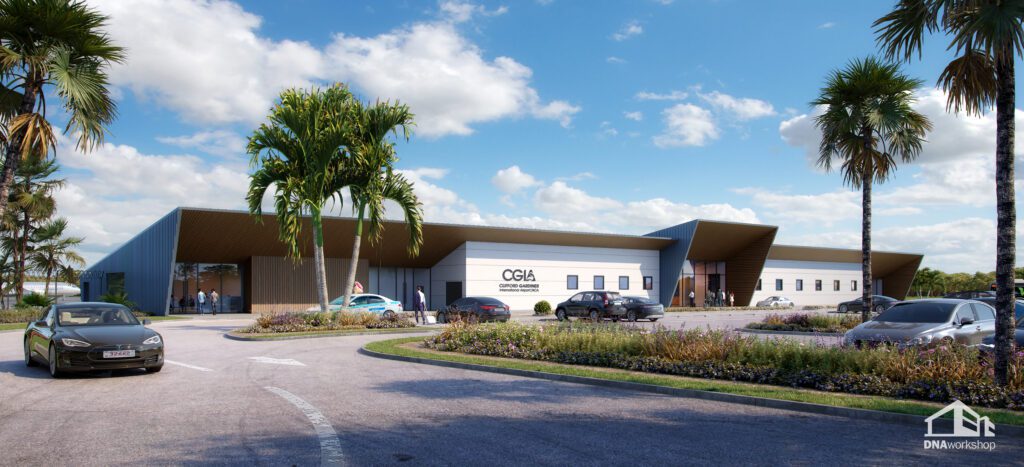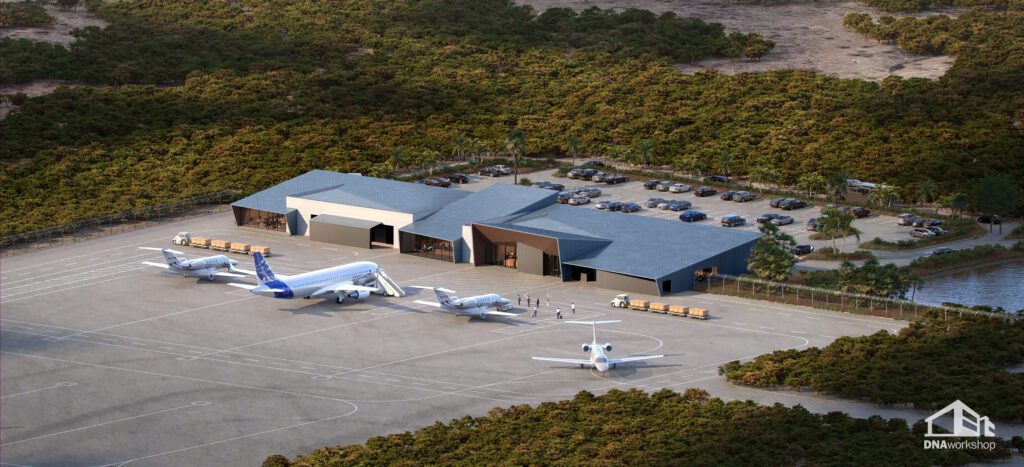DNA Workshop and the Turks and Caicos Islands Airport Authority unveiled the design for the new Clifford Gardiner International Airport during the renaming ceremony held on North Caicos.
In discussing the impact that the airport would have during the renaming ceremony, TCIAA Executive Chairman Selvyn Hawkins discussed the impact that the airport would have on the future of the island of North Caicos.
“Today we also bolster our aspirations for a bold, daring, and prosperous future for the Turks and Caicos islands… through the unveiling of designs for what will be a modern, state of the art, premium class passenger terminal here on the island of North Caicos,” said Selvyn.
DNA Workshop Managing Partner Dyke Nelson expressed his gratitude to the TCIAA for their trust, emphasizing the care that has gone into the design.
“This is possibly the most important project that we’ve ever worked on. Our hope is that, 20, 30 years down the line you’ll still be using this airport in a way that is very useful for North Caicos. And again, all we want to do is honor the people of North Caicos and the Gardiner family, and we take that task very seriously,” said Dyke.


Inside the Airport Design Process
The project started with a focus on the floor plan to make sure that it was functional before turning attention to the form. Studying similar-sized airports and other buildings with simple forms, the team gathered ideas that could work within the airport’s scale to ensure the floorplan matched the team’s objectives.
“The building had to be functional,” said DNA Workshop Partner and project design lead, Bryce Risher. “The terminal building could be the most beautiful building in the world, but if it did not function efficiently, it would be a failure.” We used the layout of the building to encourage the ease of crowd movement and prevention of bottlenecks. The challenge was to fit a large programmatic function into a relatively small footprint when comparing the size to other airports. All airport terminals rely on large areas of the building to accommodate the flow of passengers throughout the day, so the challenge becomes finding the balance between efficiency and excess when it comes to space planning the program to accommodate the staged arrivals and departures of its users.
The movement of the people was a primary focus of the project. There is an extremely specific and defined flow to getting on and off an airplane, this terminal will also add the complication of including immigration and customs in the arrival process. This constant movement needed to work in harmony along with space dedicated to airport administrative and operations with all this program in a small footprint.

Giving it Wings
After the interior function was in place, the team turned its attention to the exterior design. While many of the historic island buildings feature a very traditional, West Indies/Caribbean style, DNA Workshop decided to focus on a forward-facing design with a nod toward future development.
“We had the idea of giving the building an expression of flight,” said Risher. “We sought a comfortable abstraction of the expression of flight by pushing and pulling pieces of the building in a way that supported the design intent” The team studied aerodynamic and aeronautical forms and researched the various mechanisms that give it flight to deftly incorporated into the final design.
The building itself needed to be long and linear to maximize the 18,000-square-foot space and increase the building frontage to the land side and air side functional requirements such as passenger drop off or baggage queuing.
“We used the form of the building to intuitively guide travelers to the entry for departures and arrivals explained Risher. “The overarching idea was that the building should be expressive and provide this innate sense of direction and flow. This was especially important in an airport where there is such an international draw. You have people who speak and read all different languages, so the flow needed to be intuitive.”
More Unique Features
The DNA Workshop design team incorporated more distinctive features such as an open glass window across the back of the airport, which looks out onto the apron where aircraft are loaded, unloaded, refueled, boarded, and maintained. This feature provides an interesting view to the activity that goes on behind the scenes of an airport. On the side of the terminal is a large lounge area that offers a tropical view towards Flamingo Lake.
“Our idea was to provide the traveler with a unique view to the energy and activity at the airport rather than just looking out of a generic window at nothing,” said Risher. “Hopefully this view will create some excitement and help visitors feel more connected to the travel experience.”

Helping Growth Take Flight
Hon. Arlington Musgrove, Minister Responsible for Aviation and Airports, and House of Assembly Representative for North Caicos emphasized the benefits of the project stating, “This project will not only improve the efficiency and capacity of the airport but also create new opportunities for tourism and economic development in North Caicos.”
Dyke Nelson believes that this project will be a catalyst for growth to open up the island to more vacationers and share the natural beauty of the area.
“We are excited and proud to have been chosen for this project,” said Nelson. “It is a significant step for our firm to take on international work and more importantly this is a notable project for Turks and Caicos that will open up a whole new area of their islands for visitors and tourism.”
Bryce Risher summed up the feeling of the design team. “I think this project is a great opportunity to showcase our capability of creating something that is functional, beautiful, and has a larger impact on the island, and essentially the world. At DNA Workshop, our whole philosophy on architecture is that the things we create make the world a better place. This airport will give more people access to a beautiful vacation and provide island residents opportunities for jobs, future growth, and overall economic development. I’m glad we got to play a part in that.”
